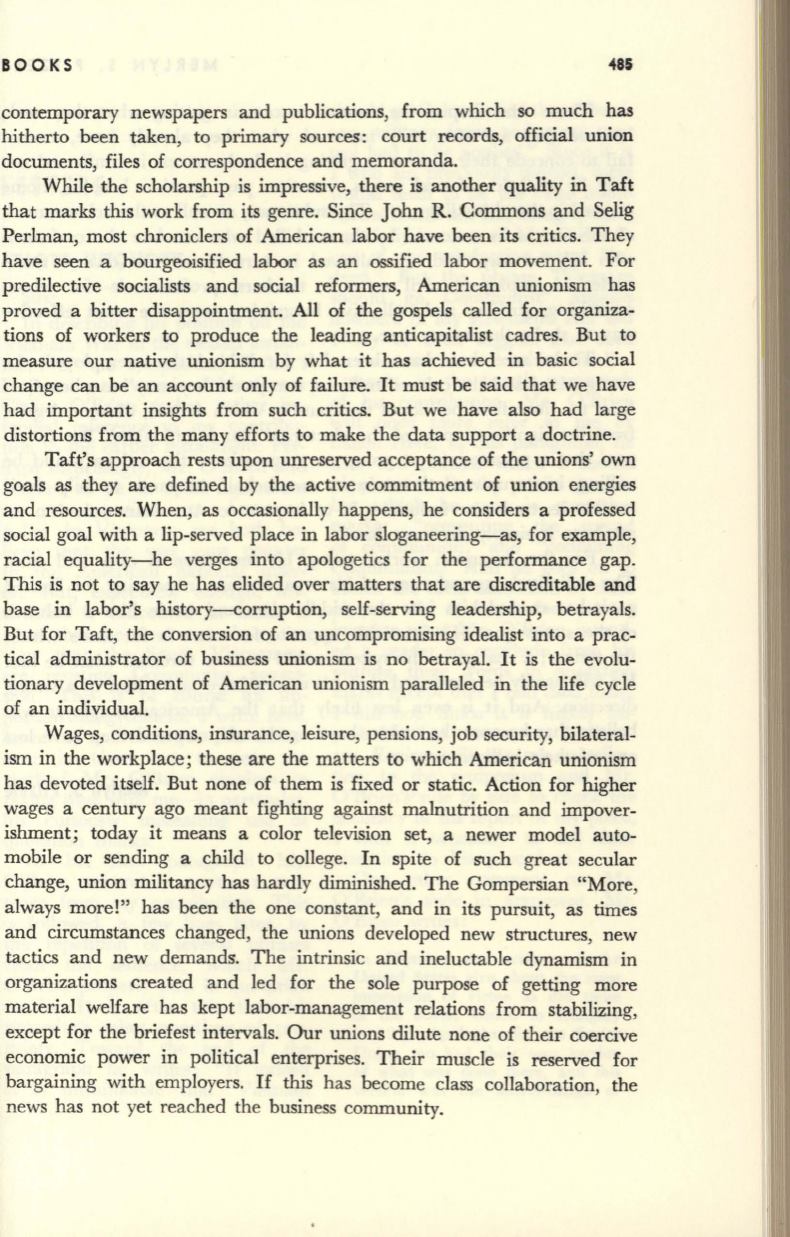
BOOKS
485
contemporary newspapers and publications, from which so much has
hitherto been taken, to primary sources: court records, official union
documents, files of correspondence and memoranda.
While the scholarship is impressive, there is another quality
in
Taft
that marks this work from its genre. Since John R. Commons and Selig
Perlman, most chroniclers of American labor have been its critics. They
have seen a bourgeoisified labor as an ossified labor movement. For
predilective socialists and social reformers, American unionism has
proved a bitter disappointment. All of the gospels called for organiza–
tions of workers to produce the leading anticapitalist cadres. But to
measure our native unionism by what it has achieved in basic social
change can be an account only of failure.
It
must: be said that we have
had important insights from such critics. But we have also had large
distortions from the many efforts to make the data support a doctrine.
Taft's approach rests upon unreserved acceptance of the unions' own
goals as they are defined by the active commitment of union energies
and resources. When, as occasionally happens, he considers a professed
social goal with a lip-served place in labor sloganeering-as, for example,
racial equality-he verges into apologetics for the performance gap.
This is not to say he has elided over matters that are discreditable and
base in labor's history---corruption, self-serving leadership, betrayals.
But for Taft, the conversion of an uncompromising idealist into a prac–
tical administrator of business unionism is no betrayal. It is the evolu–
tionary development of American unionism paralleled
in
the life cycle
of an individual.
Wages, conditions, insurance, leisure, pensions, job security, bilateral–
ism in the workplace; these are the matters to which American unionism
has devoted itself. But none of them is fixed or static. Action for higher
wages a century ago meant fighting against malnutrition and impover–
ishment; today it means a color television set, a newer model auto–
mobile or sending a child to college. In spite of such great secular
change, union militancy has hardly diminished. The Gompersian "More,
always more!" has been the one constant, and in its pursuit, as times
and circumstances changed, the unions developed new structures, new
tactics and new demands. The intrinsic and ineluctable dynamism in
organizations created and led for the sole purpose of getting more
material welfare has kept labor-management relations from stabilizing,
except for the briefest intervals. Our unions dilute none of their coercive
economic power in political enterprises. Their muscle is reserved for
bargaining with employers.
If
this has become class collaboration, the
news has not yet reached the business community.


